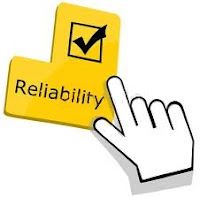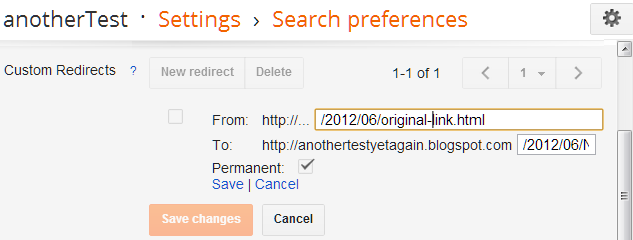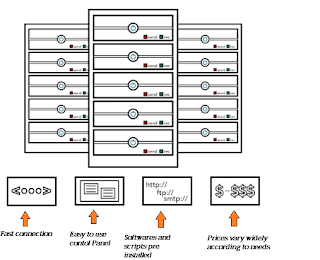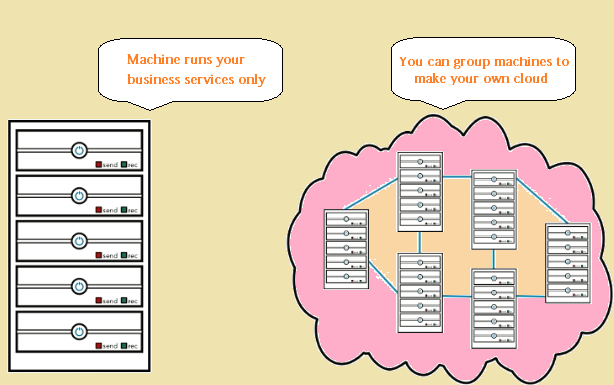web hosting reviews-choose and select the right hosting company for your website!
Since internet has changed the traditional marketing strategies. No matter how big or small a business is, Having an online address was never so imperative than before. But what seems to be more important than an online address is, choice of domain registrar and the web hosts. Your website has a very strong impact on your business and with all most around half a million hosting provider companies in the market, it's quite tough to choose the right web host for your website.
Well, to help you decide the right company for your business, I present these analysis on some very popular web hosts in the market. If you use these analysis wisely, you will definitely find it worth spend your time reading these reviews. So read them and then select a company for your business or organization. Best of luck for 2013!
Web hosting reviews of top companies - updated for 2013
1. Fatcow's hosting reviews
2. ipage hosting reviews
Let's start ipage analysis by reviewing it's very popular money back guarantee. Though the ipage money back guarantee commits to return back money at any time without a question and is very popular also but what most people don't know, is the amount returned to a buyer at the time of cancellation of service is calculated on a rule which is formed on two basis:
i. Remaining Period.
ii. The early cancellation charge.
MONEY REFUND RULE =
{ Remaining Period - cancellation charge}
This money refund rule might sound disappointing but it is far better than getting no refund at all, which in fact is the case with most of the web hosts.
Ipage is a web host situated in Boston, started in 1998, currently registering more than half million domains and hosting more than a million websites on it's server.
Ipage was initially set to Boston but as it was now sold to Endurance International Group, the company expanded it's branches in 150 countries all around the world.
For complete analysis of Ipage services read-
3. Hostgator hosting reviews
Hostgator is fairly new as compared to fatcow and ipage. The company was established in 2002 in Houston with only two servers. But with it's really amazing hard work, it manged to amaze everyone with it's record breaking growth rate. Hostgator is one of those companies which managed to move from 2 servers to a fully established Multi level IT company. In-fact Hostgator is considered as the fastest growing IT company in Texas. After a successful start in USA, Hostgator is shifting it's business worldwide. Hostgator initially has participated with Google to launch "Indiagetonline.com". Indiagetonline is a hosting provider powered by Hostgator and Google. Hostgator has many types of hosting plans to offer which includes shared hosting, dedicated hosting, reseller hosting. One reason for hostgator booming success is it's very handy add-on which comes free with each of it's hosting plans. Hostgator provides simple script for easy CMS installation, Domain parking facilities, Private dedicated IP address, Tool free no etc for specific business needs. Very handy indeed!
For complete analysis of Hostgator services read-
Let's start ipage analysis by reviewing it's very popular money back guarantee. Though the ipage money back guarantee commits to return back money at any time without a question and is very popular also but what most people don't know, is the amount returned to a buyer at the time of cancellation of service is calculated on a rule which is formed on two basis:
i. Remaining Period.
ii. The early cancellation charge.
MONEY REFUND RULE =
{ Remaining Period - cancellation charge}
This money refund rule might sound disappointing but it is far better than getting no refund at all, which in fact is the case with most of the web hosts.
Ipage is a web host situated in Boston, started in 1998, currently registering more than half million domains and hosting more than a million websites on it's server.
Ipage was initially set to Boston but as it was now sold to Endurance International Group, the company expanded it's branches in 150 countries all around the world.
For complete analysis of Ipage services read-
3. Hostgator hosting reviews
Hostgator is fairly new as compared to fatcow and ipage. The company was established in 2002 in Houston with only two servers. But with it's really amazing hard work, it manged to amaze everyone with it's record breaking growth rate. Hostgator is one of those companies which managed to move from 2 servers to a fully established Multi level IT company. In-fact Hostgator is considered as the fastest growing IT company in Texas. After a successful start in USA, Hostgator is shifting it's business worldwide. Hostgator initially has participated with Google to launch "Indiagetonline.com". Indiagetonline is a hosting provider powered by Hostgator and Google. Hostgator has many types of hosting plans to offer which includes shared hosting, dedicated hosting, reseller hosting. One reason for hostgator booming success is it's very handy add-on which comes free with each of it's hosting plans. Hostgator provides simple script for easy CMS installation, Domain parking facilities, Private dedicated IP address, Tool free no etc for specific business needs. Very handy indeed!
For complete analysis of Hostgator services read-
4. Webhostinghub reviews
Webhostinghub has 3 servers which are placed in 3 cities of USA namely New York, Florida and California and it's operating center or say the main office is in Virginia. Though the company claims to be founded in 2001 but since the dns records says that the domain got registered back in 2011, do raises a question mark in it's claiming. But if we leave it's dns records and it's claims a side and focus on rest of the reviewings, we find that webhostinghub has much to offer to it's clients. With a stand alone "shared hosting" plan starting with just $4.95 is one fit plan for all types of business needs.
An easy control panel, website builder, CMS, US call support, unlimited websites, unlimited email, Unlimited disk space and bandwidth plus this all comes with a 90 day money back guarantee.
For complete analysis of Webhostinghub services read-
5.Godaddy reviews
Founded in 1997, today is the biggest domain registrar in the market and provides all type of web hosting which includes shared, virtual, dedicated and cloud hosting. The company is very famous almost around all corners of the world because of it's 99.9% up time guarantee. Godaddy could be a good option to opt if you are looking for features like content management system, Forms CMS, blogging platforms etc.
The pride of Godaddy currently is empowering more than a million of customers world wide on more than 35 thousands of servers.
No doubt, Godaddy is the biggest domain registrar and a leader in the hosting industry.
For complete analysis of Godaddy services read-
Why I started this web hosting review blog?
Unlike past more and more companies are focusing their businesses nature online. In order to showcase products and find potential customers online the very first priority is to find a domain name registrar and a company for hosting your website. But we don't know which web host will fit with our nature of business, Which company provider provides optimum server up time, support services etc. Believe me, I have suffered many business failures just because of server down problems. I understood at just an age of 16 years that I am talented in IT field. My hunt for talent finished with the launch of my first website in "form 3" and since then till present I am constantly devoting my time and energy towards IT industry. The most tough thing for me as a newbie in IT was to choose a good company for my website. Believe me I have changed my website hosting server 3 times in a year because of server down problems. There are many companies with their tall claims like quality services, award wining support, 99.9% up time guarantee etc, but all these claims are not met by most of the companies. The point which always strike my mind was a review service. A tool-free service to perform analysis You must be thinking that I am going crazy now but I always dream that, what if a company ask you to take web hosting services on a review basis for say a month or two and then charge you, Though that type of analysis is only possible if web hosting companies let us do but since they charge for web hosting weather you want it on review basis or for use, this limits an Individual from performing reviews. To solve this review problem, I spend my money and time to review each webhosting companies personally and help you choose the right web host for your business. So that when you take web hosting services you forget about performing analysis and feel comfortable in choosing the web host for your business.
Visit here to Learn >> How to create a website for free
How do I perform reviews?
I divide my web hosting review procedure in two phase:
Phase 1: simple and general analysis.
Phase 2: Complex and Advanced analysis.
Phase 1: This review phase is simple and is just a general review of a web host. I simple check for things like Plan types, It's cost, Up time guarantee, Trust and Authority, Experience, Services, Exclusive offers etc. After reviewing all these I simply go for the web host. I pretend like I am a new buy who don't even know like how to pay, Create email id, Upload files through ftp programs. I just play my self like a new guy who is not familiar with even control panel and this helps me review their support services. Here I also try to test the knowledge of their technical team by raising issues like virus problems, scripts installation etc.
Phase 2: This review phase starts after the completion of review phase 1. This phase is not a general phase i.e. It involves those activities which a normal user will never perform. The review phase starts by testing server speed using speed test meter. Then using Pingdom services to completely review any company. Since the process involves taking and and using their servers in order to tackle real world problems, this piece of process helps me give out much realistic analysis for my blog readers.
How do I evaluated web hosting review score?
I evaluate the score of web hosts by using multiple factors score:
- Reliability Sore
- Speed Score
- Usability Score
- Features Score
- Price worth Score
- Customer support Score
TOTAL SCORE = Reliability Sore + Speed Score + Usability Score + Features Score + Price worth Score + Customer support Score
REVIEW SCORE = TOTAL SCORE / 6
 1. RELIABILITY:- The the most important aspect of all when it comes to review a company is reliability. For a business to succeed online it's web host should provide 99.9% server reliability and up time guarantee. Major Search engines like Google, Yahoo, Msn etc will never love a website which has server fault or is having server downtime and if they don't love it they will never put your website high up in their search results and you end up loosing customers. Server up time and reliability is what most of the SEO companies want to insure first. It is well known in SEO community that server down time has serious negative impact in your SEO effort. So in my analysis, reliability is in the topnotch priority.
1. RELIABILITY:- The the most important aspect of all when it comes to review a company is reliability. For a business to succeed online it's web host should provide 99.9% server reliability and up time guarantee. Major Search engines like Google, Yahoo, Msn etc will never love a website which has server fault or is having server downtime and if they don't love it they will never put your website high up in their search results and you end up loosing customers. Server up time and reliability is what most of the SEO companies want to insure first. It is well known in SEO community that server down time has serious negative impact in your SEO effort. So in my analysis, reliability is in the topnotch priority.2. SPEED SCORE: The second most important aspect which I look in a company while performing their hosting analysis is Speed.
A company can include a plan for unlimited disk space and bandwidth in their sales page but might limit your web server speed so that if your website gets too popular and is using high server bandwidth, by limiting the speed helps companies to limit the use of their server because your website has access to limited data transfer/sec and this makes your site busy and it loads very poorly. Now this practice will help a company but for a website, it's something which a webmaster should never let happen and it is very annoying to your site's loyal visitors. So here I check different speed parameters and then I assign speed score points to get added in the report.
3. USABILITY SCORE: Their is no point in neglecting the usability factor when performing a check. It is tendency of newbies to neglect the usability factor just because of either lower price or higher bandwidth offer. But most webmasters know the importance of Usability.e.g. A task like WordPress installation can be done either manually or if the web hosting company provides simple scripts in control panel for single click CMS installation. With simple scripts in control panel can save your lot amount of time and hence make you more productive. Another thing when it comes to usability is the use of control panels. There are many control panels available in the market but the most easy and usable one is C panel. So it is important to choose a web host that provides c panel control panel for use. So here I check different usability parameters and then I assign usability score points to be added in the report.
4. FEATURES SCORE: What most of the people think of features in a plan is disk space and bandwidth. Though disk space and bandwidth are the most important one, but that's not. Think of a company which provides features like free Google and FB credit, free website submission in yellopages etc. All these features can prove icing in a business growth and one should never miss these features from availing. So here I check different features and then I assign feature score points to be added in the report.

5. PRICE SCORE: This review score deals with calculation the worthiness of price. Do you really get return on investment? Though the call is to check ROI and price worthiness but their are other things like easy payment option, money back guarantee, secure payment, privacy policy, billing terms, Tax information etc which I try to figure out as well.
So here I check ROI and other price features and then assign Price score points to be added in the report.
 6.CUSTOMER SUPPORT: If you are new to IT field, customer support will be something which you gonna be needing the most. Since web hosting is a digital product and you have no physical support so customer support plays an important role in both technical and customer support. Things like fast and intelligent technical technical support, online Ticket support, live chat are the Hallmark of a Good company. In order for me to assign customer support points, I test customer support department of a company by checking there response time and quality of response, Do they really take your call important? etc.
6.CUSTOMER SUPPORT: If you are new to IT field, customer support will be something which you gonna be needing the most. Since web hosting is a digital product and you have no physical support so customer support plays an important role in both technical and customer support. Things like fast and intelligent technical technical support, online Ticket support, live chat are the Hallmark of a Good company. In order for me to assign customer support points, I test customer support department of a company by checking there response time and quality of response, Do they really take your call important? etc.Are these review score honest, unbiased and unprejudiced?
Webhostingasia.blogspot.com is a review blog solely run by shiv. The blog has no contact with any companies whose products or services this blog reviews. This blog is founded keeping in mind to educate newbies about IT products and services.
Why do ads appear on this blog?
Ads on these blog is server by Adchoices ( a third party ad network run by Google). The blog has no direct or indirect relation with any of the advertisement served on this blog. The fact that these ads help me cover the investment which comes in the maintenance, testing and product purchasing in order to provide reviews.
My Disclosure: I Certify that this blog is completely commission free, Unbiased, Unprejudiced and strive to provide best and honest web host analysis to help people decide the best web hosts.
Copyright © 2013, All rights reserved!




















.jpg)






